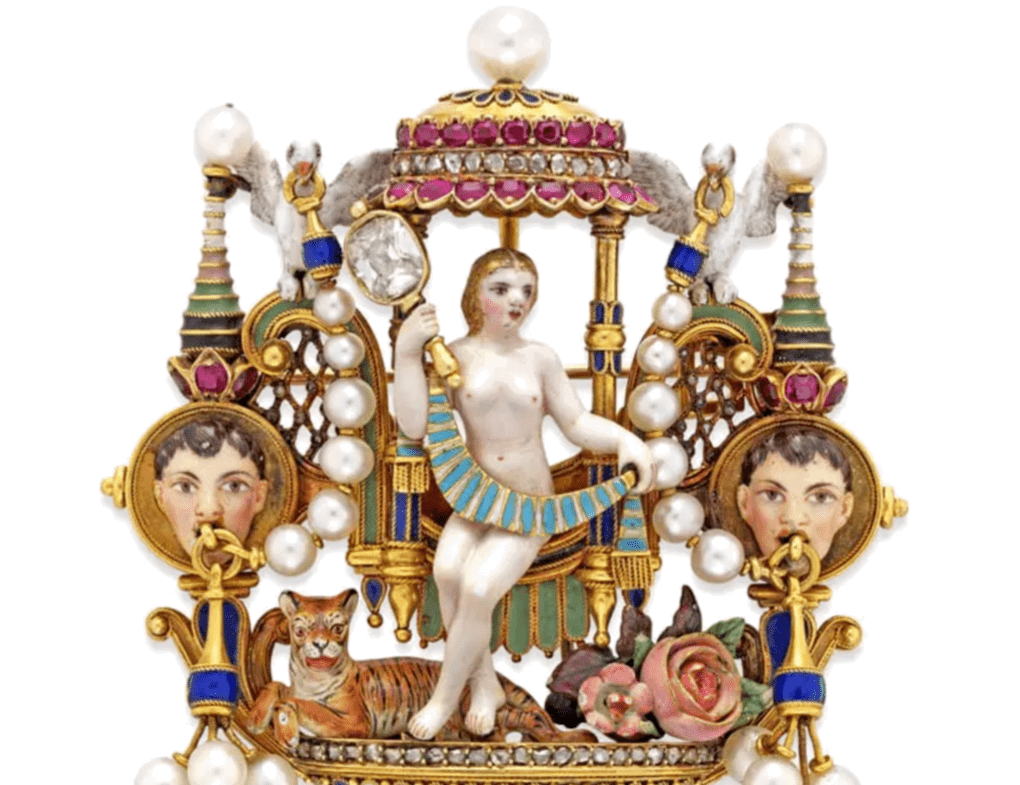The veiled figure of Venus, holding a diamond-set mirror, is drawn directly from mid 16th century iconography as seen in engravings such as those of Virgil Solis and jewels and precious objects in the style of Erasmus Hornick, which were inspirational to other 19th century revivalist jewellers such as Lucien Falize.
An intriguing brooch by Carlo Giuliano
This splendidly eccentric, quirky and eclectic jewel created by Carlo Giuliano probably around 1880, is a pastiche of Renaissance motifs combined with others drawn from the esoteric symbolism of the Western Mystery Schools.
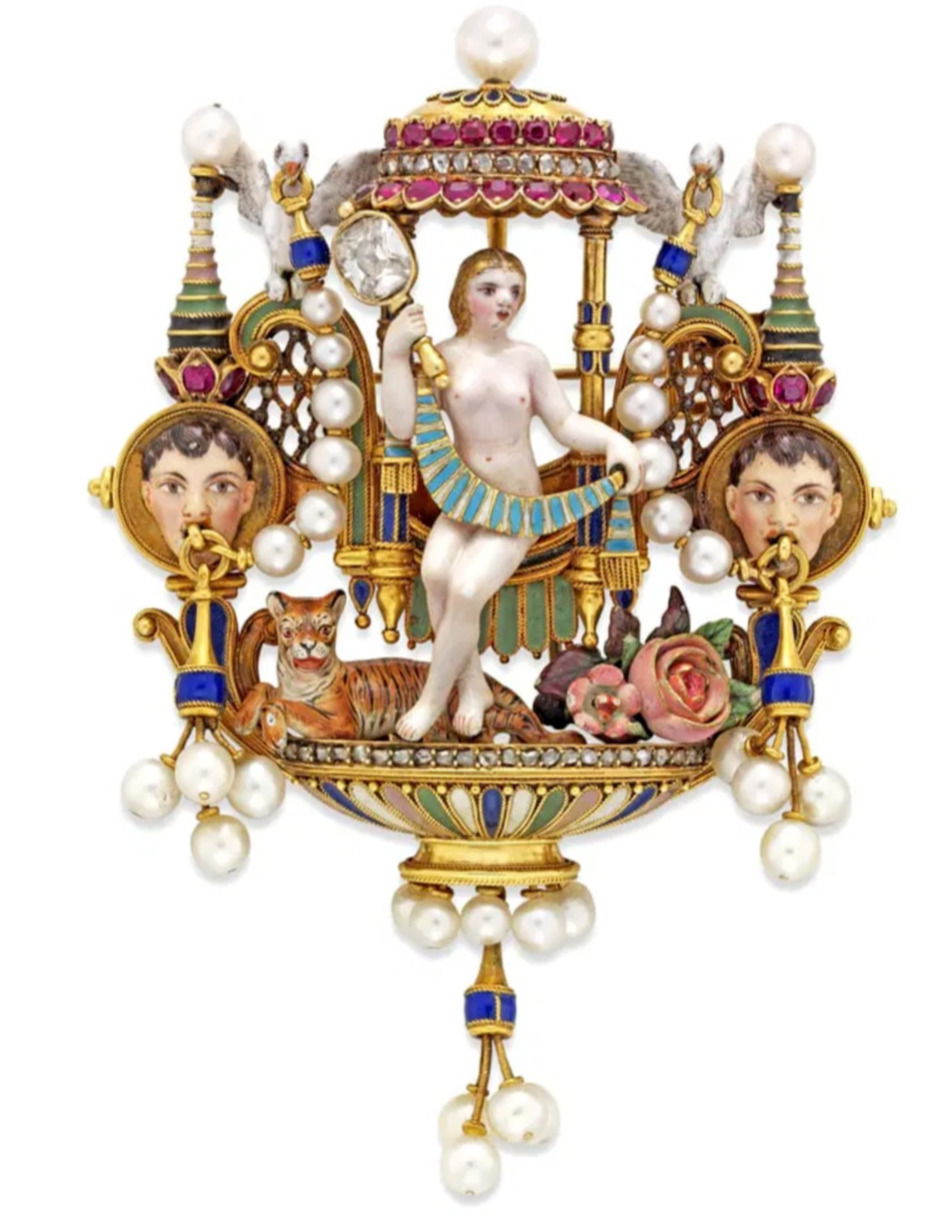
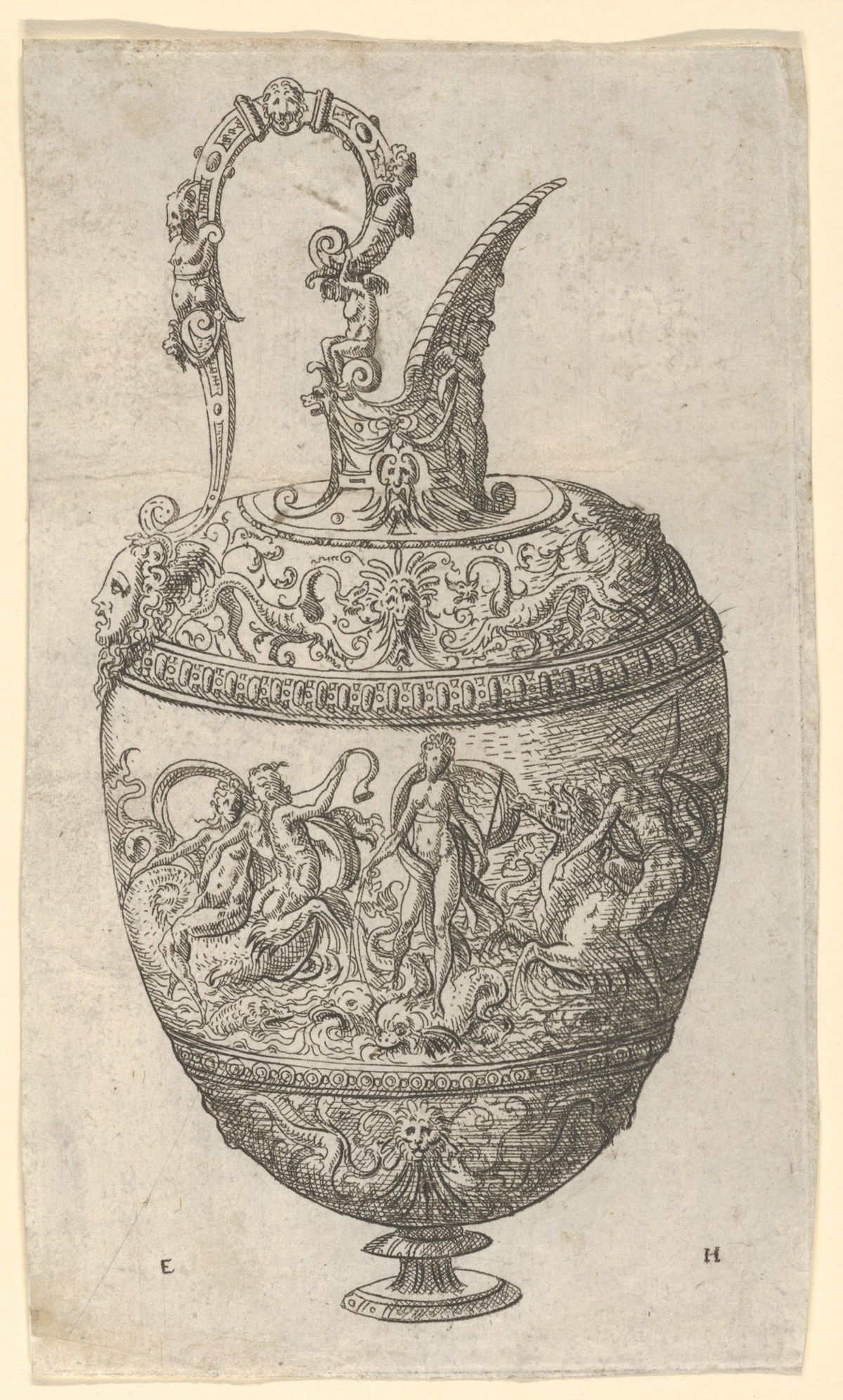
The symbolism, however, is also closely related to the ‘World’, the twenty-second card of The Major Arcana of Tarot which was enjoying renewed interest from the mid-century onwards throughout Europe under the influence of the writings of Eliphas Levi.
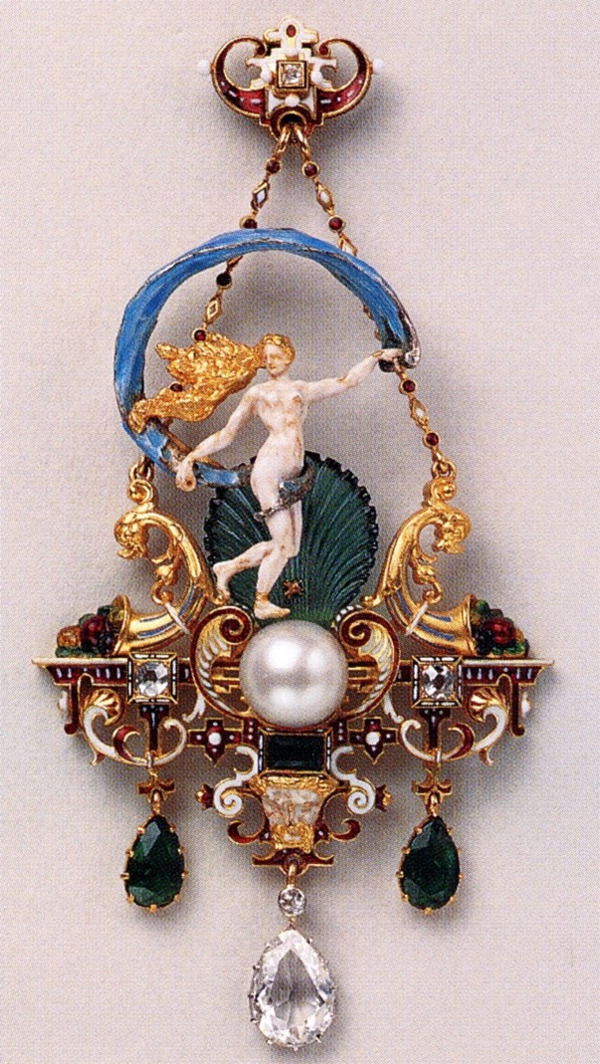
Levi was a widely read and celebrated French esotericist and magician, who was responsible for sparking off the revival of interest in ceremonial magic in Europe and yet was much misunderstood in his day. He is remembered today for his pioneering occult writings and illuminating aphorisms: ‘Nothing can resist the will of man when he knows what is true and wills what is good’.
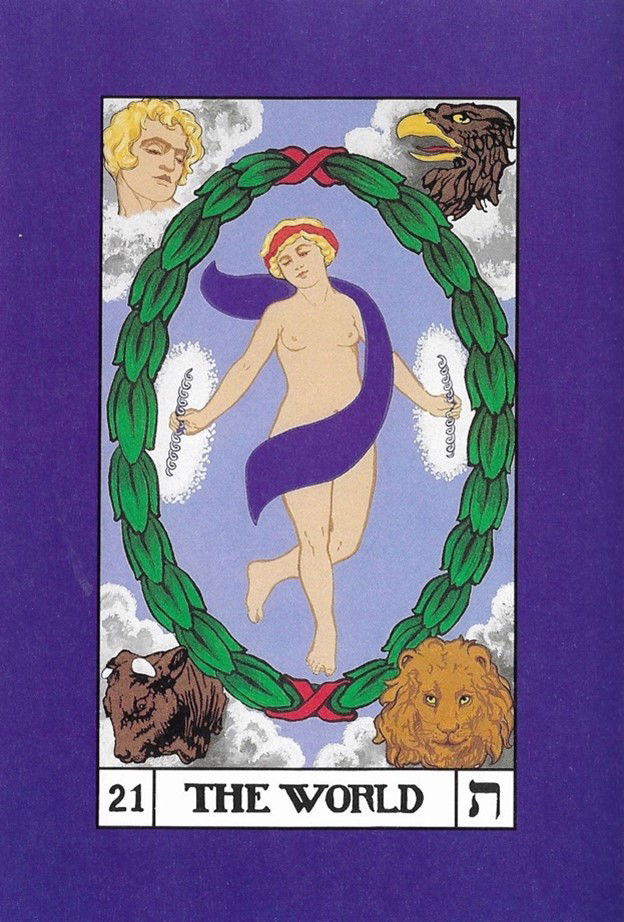
We believe it is perfectly possible that this unusual jewel was commissioned by a high grade initiate of one of the important secret esoteric societies such as the Golden Dawn in London which counted among its members, William Butler Yeats, Florence Beatrice Farr and William Wynn Westcott.
